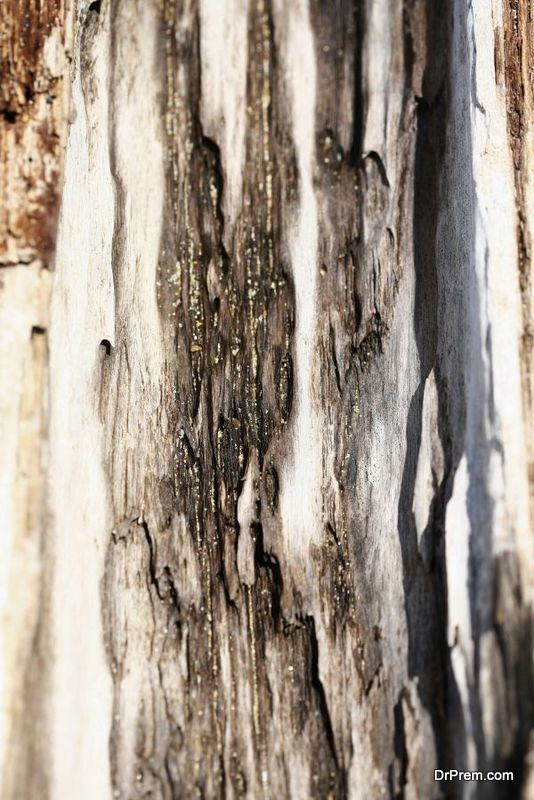The distinctive and beautiful British countryside we all know and love is under attack and not just from developers and bulldozers. There is an unprecedented and sustained attack underway right now from a variety of tree diseases that threaten to wipe out many of our best loved trees. Although these diseases rarely make it into the national news they have the potential to devastate many of our best loved trees, irrevocably changing the British countryside.
Tree diseases such as Dutch elm and Chalara Ash Dieback are unprecedented in their devastation, and are already causing the death of millions of mature trees, with many millions more at threat.
What can be done to halt the spread of these diseases, and reverse the massive damage they’re causing? One strategy focuses on education and citizen science.
Educating about types of trees and the diseases they face can open the eyes of regular citizens to how they can notice and try to prevent the spread of this devastation. It does take time which is precious, especially to someone already getting an education. A student might be interested in acquiring this knowledge about tree diseases, but doesn’t have time and is thinking “if only someone can do homework for me”. But with dedication and understanding of the gravity of the potential disaster tree diseases can bring to the community, everyone can be educated.
Disease that Ravage Nature
In the last couple of decades, the UK has been hit hard by many devastating tree diseases that have collectively infected and killed tens of millions of trees, and may kill millions more.Below are three of the worst:
- Dutch Elm disease killed 30 million elm trees by the mid-1980s.As it stands in 2016, most of the country’s mature elms have now been lost. Young elms are also susceptible to the disease although breeders are trying to breed resistant strains to kick start the population again.
- Chalara Ash Dieback is believed to have infected as much as 90% of ash trees in other countries. After being confirmed in 2012, it now threatens to devastate Britain’s 90 million strong population. Ash dieback can be spread over large distances by the wind and is therefore difficult to control.
- Phoney peach disease attacks a variety of plants, including olive trees and vines, citrus trees and coffee bushes, oak and maple trees, as well as many herbaceous shrubs. Its presence in the UK was thought impossible due to our climate but a new strain has been discovered in France that many conservationists believe could represent one of the greatest threats to British trees the country has ever known.
Arboriculture and conservationism are vital in halting the spread of disease and in caring for trees that are damaged and dying, as trees and shrubs in public spaces are just as vulnerable as those in open countryside. However, arboriculture isn’t the only way to protect the nation’s trees. Public education plays an increasingly vital role too.
Why is Education so Important for the General Public?
Forests and woods cover huge areas of the British countryside and so it’s impossible for any one organisation or body to effectively monitor all of it. This is why public education is so important to helping conservationists and arborists pinpoint new instances of common tree diseases right across the UK.
Let’s look at some facets of public education when it comes to tree diseases:
Education raises awareness
For a problem to be solved, it’s first necessary that people become aware of the problem. Most people have heard of Dutch Elm disease but Ash Dieback, Phoney Peach disease and others are less well-known. Awareness is the first step in engaging with the public and requires nationwide education programs.
Education enables people to spot signs of disease
Education also helps people understand what diseased trees look like. The symptoms of Dutch Elm disease might be fairly easy to spot, but Ash Dieback is often more subtle, especially in the early stages. As for relatively new diseases such as Phoney Peach, the public is largely unaware of its existence and therefore aren’t aware of any signs that point to its presence.
Education helps stop the spread of disease
The ultimate goal of educating people about tree diseases is to empower people to fight their spread. With awareness comes knowledge and it is that knowledge that empowers people to become more actively engaged in this important battle. When people know the signs to look for and know what to do when they see those signs it becomes much simpler for arborists and conservationists to react quickly and prevent disease from spreading.
Leveraging the Power of Citizen Science
All three of these benefits of education are combined in the development of citizen science projects that focus on halting the spread of devastating tree diseases.For instance one citizen science project, called The Living Ash Project, invites participants to assess local ash trees for the fungal disease Ash Dieback. The 5-year-long project will ultimately enable researchers to identify ash trees that are resistant to the fungus. It’s hoped that these trees can then be used in a breeding programme to help grow new resistant trees.
However, with over 100 million ash trees in the UK, it would be impossible for any single group of researchers to locate a significant proportion of the 1% of trees that are resistant. But, by enlisting the help of people all over the country—and providing some important education—it may be possible to locate enough genetically diverse trees for a successful breeding programme. In the case of citizen science, the end result really is greater than the sum of its parts.
About the Author: Paul George is the managing director of Landmark Trading Ltd, and has worked in the arboriculture industry for 14 years. Landmark Trading are one the the UK’s leading suppliers of arborist, tree surgeon and tree climbing equipment. You can connect with Paul on Twitter, Facebook or call Landmark Trading on 01780 482231.





